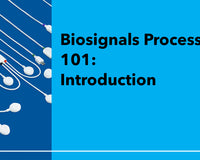What are Biosignals?
Biosignals are by definition physiological electrical signals emitted by biological beings. Biosignals can be emitted by our body when flex a muscle, move our eyes or even think and sleep.

How can I measure Biosignals?
Measuring a biosignal entails converting it to an electric signal using a device known as a biotransducer. You can also measure biosignals with products from our BITalino and biosignalsplux product line.
What are the most popular type of biosignals?
Here you can find a list of the most popular biosignals and their respective sensors, and get to know what they are all about.
Electroencephalography is a method of electrophysiological monitoring that is used to record the electrical activity of the brain. EEG sensors can be used to track changes in cerebral activity as a result of visual or auditory stimuli.
Electrocardiography is the process of producing an electrocardiogram, a record of the electrical activity of the heart. ECG sensors can be used to extract heart rate data and other ECG features, enabling its application in a wide diversity of research fields.
Electromyography is a technique for monitoring the electrical activity of the excitable membranes of muscle cells. EMG enables the translation of these electrical signals into numerical values, enabling them to be used in a wide array of applications.
Electrooculography is a technique for measuring the corneal-retinal position potential existing between the front and back of the human eye.
Electrogastrography is a non-invasive technique for recording gastric myoelectrical activity using cutaneous electrodes placed on the abdominal skin over the stomach.
Electrodermal activity is the property of the human body that causes continuous variation in the electrical characteristics of the skin. The EDA sensor is capable of accurately measuring the electrical properties of the skin which changes. These changes are caused by alterations in sweat secretion and sweat gland activity as a result of changing sympathetic nervous system activity
We hope this article was informative about the basics of Biosignals and the fuction of each sensor.🙂
Don't forget to visit our official support page if you have any questions!🙂











